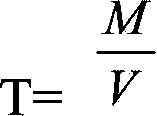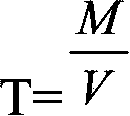Method for measuring copper content in tin-silver-copper solder through iodometry
A tin-silver-copper and copper content technology, applied in the field of analysis and testing, can solve problems such as solution splashing, distortion, and affecting the accuracy and authenticity of the results, and achieve the effects of improving accuracy, facilitating operation, and shortening the measurement time
- Summary
- Abstract
- Description
- Claims
- Application Information
AI Technical Summary
Problems solved by technology
Method used
Image
Examples
Embodiment 1
[0044] In this example, tin 72 silver 20 copper 8 For example, to measure the content of copper wherein, the specific determination method steps are as follows:
[0045] 1. Standard substance analysis
[0046] 1) Take the standard substance, as shown in Table 1:
[0047] Table 1
[0048] Standard substance name
Copper content (%)
Sample weight (g)
pure copper
99.99
0.4016
pure copper
99.99
0.4046
[0049] 2) Dissolution of standard substances
[0050] Put the weighed standard substance in a 250ml beaker, add 8ml of concentrated nitric acid, cover with a watch glass, heat at 90°C until the sample dissolves, heat at 750°C to drive out nitrogen oxides, and cool. Transfer to a 200ml volumetric flask, make up to the mark with deionized water, and shake well;
[0051] 3) Fractionation and titration of standard substances
[0052] Take 10.00ml of the above standard solution in a 250ml Erlenmeyer flask, add 7ml of a...
Embodiment 2
[0079] In this example, tin 50 silver 10 copper 40 As an example to measure the content of copper wherein, the specific determination method steps are as follows:
[0080] 1, standard substance analysis, analysis process and the titer of standard solution copper are identical with embodiment 1.
[0081] 2. Sample analysis
[0082] 1) Weigh about 0.5000g sample, accurate to 0.0001g.
[0083] 2) Dissolution of the sample
[0084] Put the sample in a 250ml beaker bottle, add 10ml of sulfuric acid to heat to dissolve, remove it and cool it to room temperature, add 25ml of perchloric acid, after the sample is completely dissolved, heat until white smoke of perchloric acid is emitted, and drop in several times Catch tin with 35ml of concentrated hydrochloric acid, concentrate the solution to a small volume, remove and cool to room temperature, add 35ml of water, transfer to a 100ml volumetric flask to dilute to the mark with water, and shake well.
[0085] 3) Sample titration ...
PUM
 Login to View More
Login to View More Abstract
Description
Claims
Application Information
 Login to View More
Login to View More - R&D
- Intellectual Property
- Life Sciences
- Materials
- Tech Scout
- Unparalleled Data Quality
- Higher Quality Content
- 60% Fewer Hallucinations
Browse by: Latest US Patents, China's latest patents, Technical Efficacy Thesaurus, Application Domain, Technology Topic, Popular Technical Reports.
© 2025 PatSnap. All rights reserved.Legal|Privacy policy|Modern Slavery Act Transparency Statement|Sitemap|About US| Contact US: help@patsnap.com



